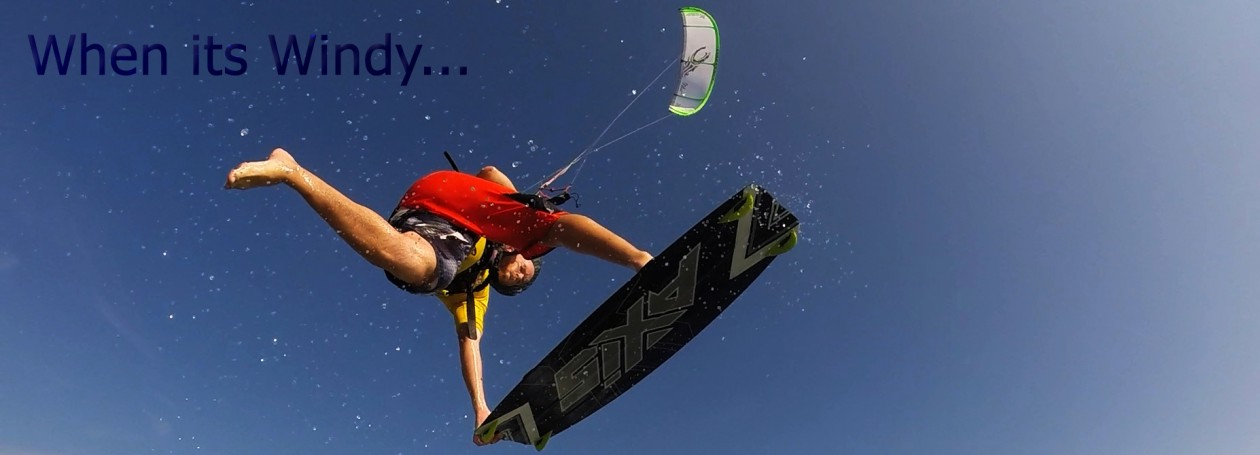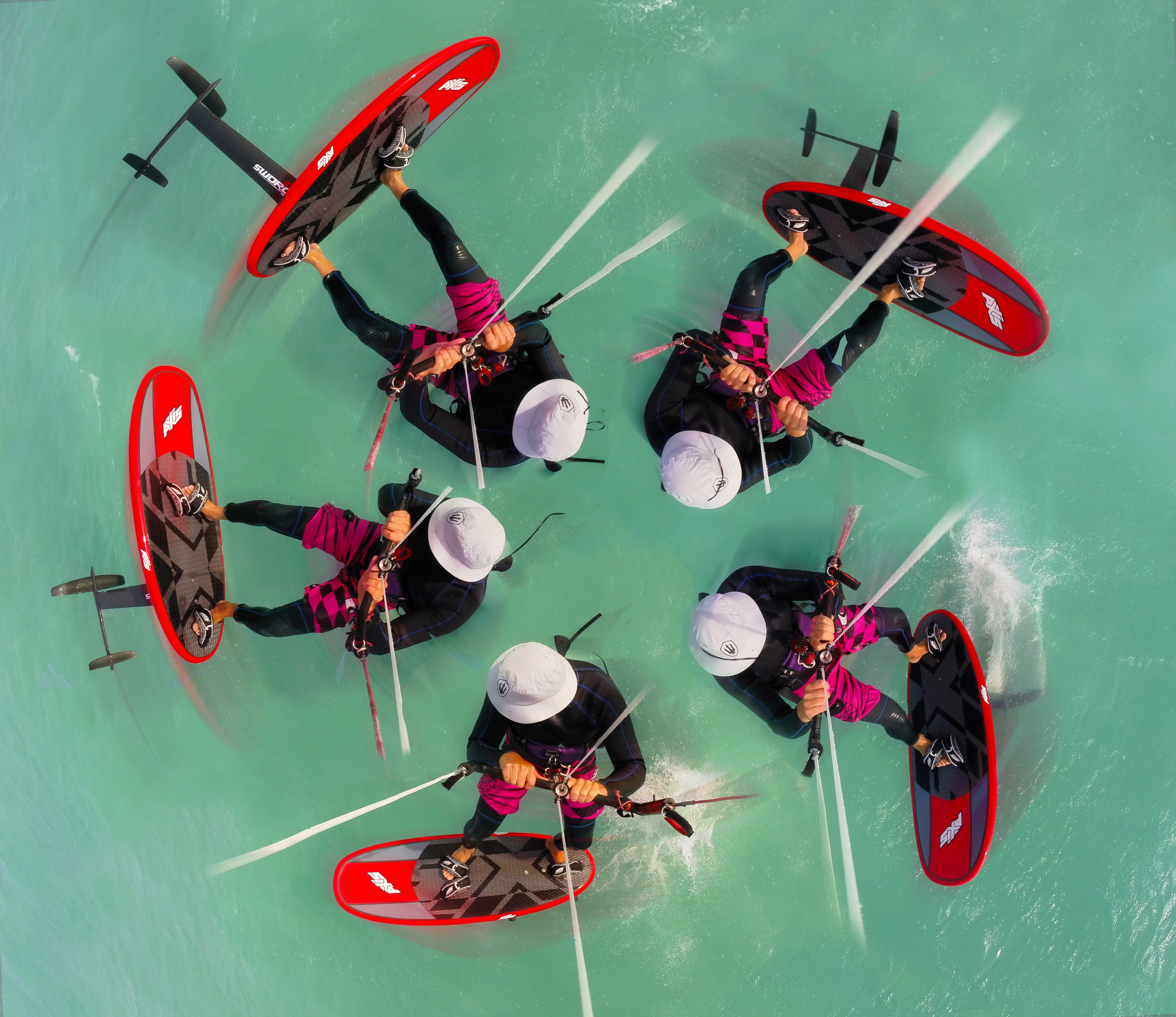Summer Breezes Part 2 – What is Kite Hydrofoil or Foilboarding?
“Did you miss whenit’swindy’s Summer Breezes part 1?” – free race boards like the sector are a great alternative to the hydrofoil.
You’ve might have seen or heard quite a lot about this style of kiteboarding recently in the kite press, online or even down the beach. If you’ve seen it down the beach you’ve probably looked on enviously as someone wizzes about on a hydrofoil whilst you sit skunked on the beach in about 7 knots of wind. I know I did and that’s part of what interested me.
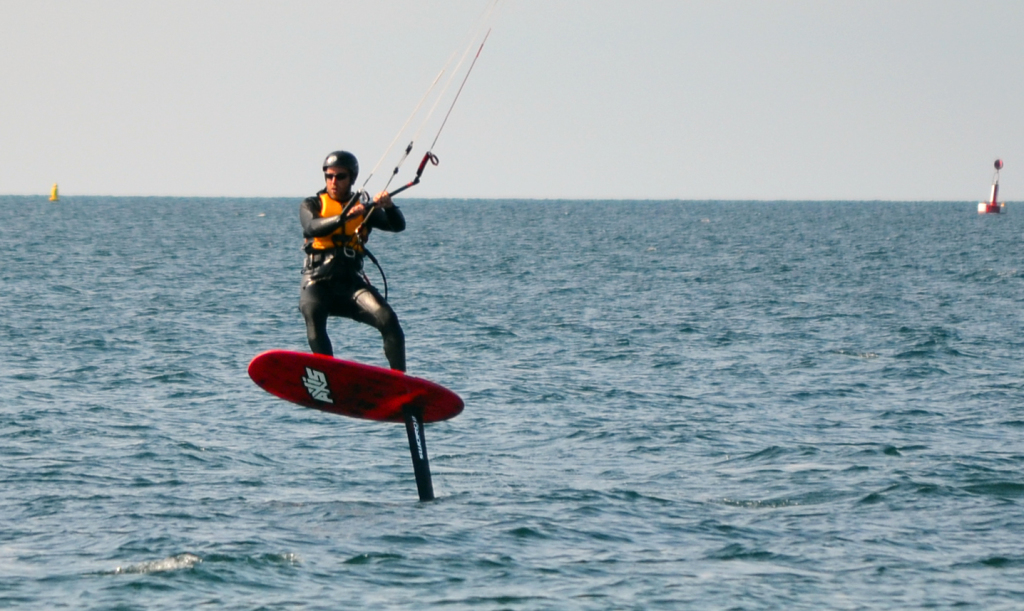
Kite foilboarding is a form of kiteboarding where instead of riding a board which planes on the water’s surface you are riding a board up to 1m above the waters surface. Apparently flying along stood on a magic carpet…The hydrofoil is effectively in flight beneath the water’s surface supporting the rider who flies above.
The kite hydrofoil and board set up resembles a small aeroplane attached via a mast to a kiteboard. The hydrofoils and masts are normally made from carbon, aluminium, steel, fibre glass or a combination of these materials. People have successfully used wood to make them also.
Hydrofoils have a lot less drag than a conventional kiteboard and are far more efficient in low winds than probably all other styles of board.
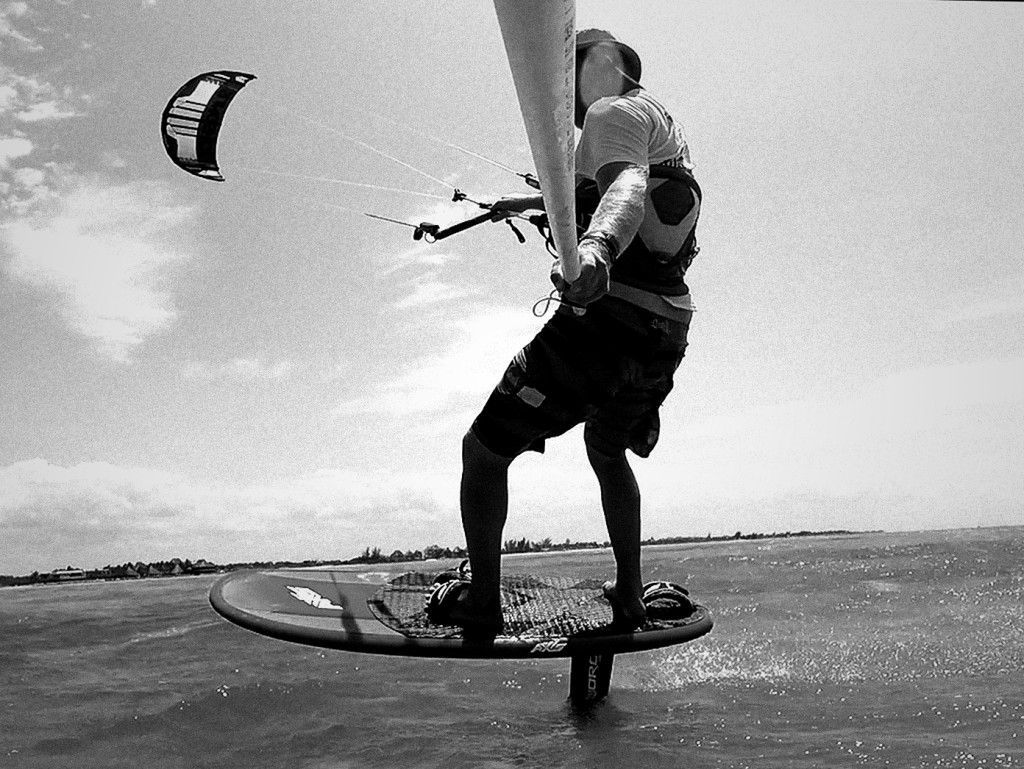
Kite Foilboarding has been around for a long time but only in the last couple of years has it started really gaining popularity. The kite racers picked up on the efficiency and speed of foilboards and as such have helped push development and production of high performance hydrofoil and foilboards. There is also a big international hydrofoil race scene.
The rise in popularity of foilboarding has also seen some of the bigger players in the kite market releasing entry level models. This should make it much more accessible reducing the previous excessive waiting times for custom hand built hydrofoils.
Kiters are now jumping , looping, freestyling, waveriding, strapless rinding as well as racing hydrofoils.
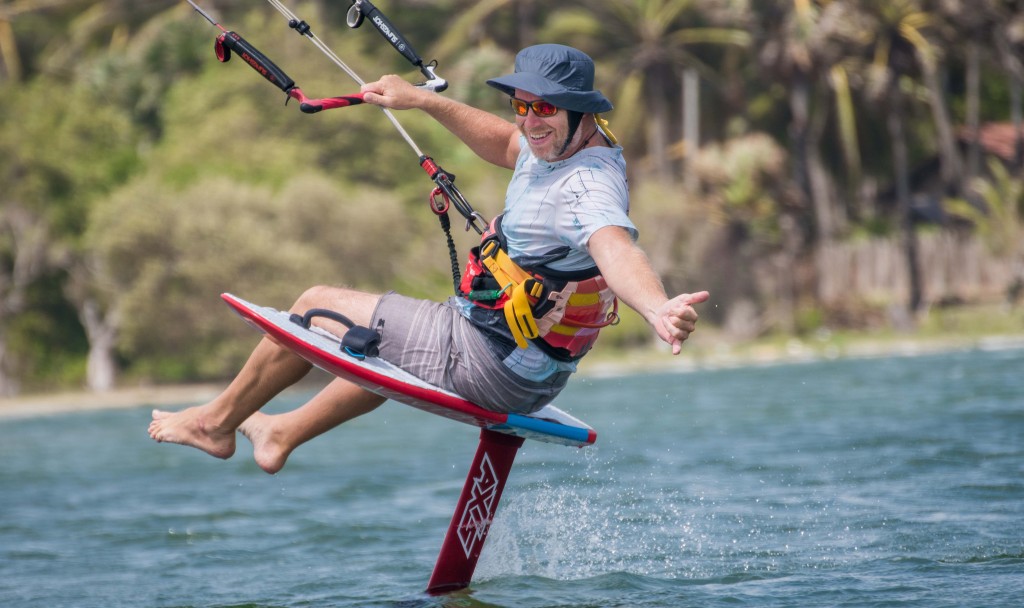
So what’s all the fuss about? Is it worth it?
Foiling is about different things for different people but from my point of view I just love the feeling of screaming around at high speed in relative silence floating apparently effortlessly in the air whilst other kites are parked on the beach. It gets me out after kite lessons when the wind is unfavourable for teaching but is still perfect for foiling. I also love the challenge of learning something new. The feeling of the foilboard underfoot is unique but has a similar floaty, smooth feel to riding powder mixed with the direct carving feel and speed of groomed pistes. The upwind angles and speed allow exploration of spots that wouldn’t normally be explored. The low wind capability also opens up spots that may have been previously out of the question with a twintip.
Many of you probably consider the cost to be too high but when you compare the price to that of a new lightwind kite you will see that they are in the same ball park. Ok so kites are a bit pricey too… So when the winds are light and you’re thinking about buying that 17m for some lightwind feestyle which lets face it is usually not that amazing, consider instead a hydrofoil and learning something new. Your 12m / 13m kite will get you out ripping in a gnats fart (7-8 knots) with a hydrofoil.
For me it was certainly worth it. It was a long time in coming and patience grew thin a couple of times during my wait – leading me to turn to cross over alternatives like unicycling but since everything finally arrived all I want to do is foil. I now pray for foil days and lighter winds and am riding happily 2m smaller kites than Cathy who weighs probably 30 kg less than me. My problem now is which 6m kite to buy… I really don’t see myself tiring of foilboarding any time soon which is a good result – having shelled out good money.
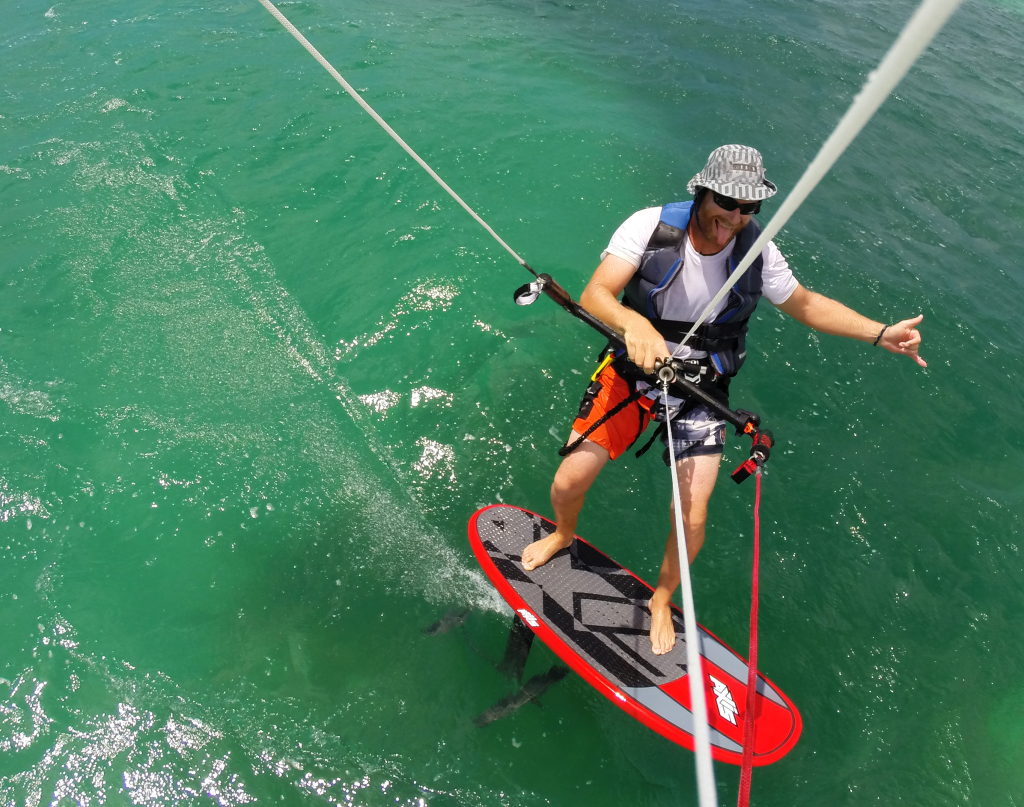
Is it difficult?
Yes and no, but it is certainly different!
Take a lesson – It’s the safest way to learn.
The basics of riding and foiling shouldn’t take too long to get to grips with. All you need is a little guidance and some perseverance. I was up and making my first stable flights during my first couple of hours on the water. I’m very grateful for the guidance I received from Gabor Vagi and also all the videos and advice available online.
Gybing and Tacking whilst foiling will take some time to master and require fine balance and timing skills but as with a directional board practice makes perfect and they are not essential to enjoy the initial delights of foilboarding.
The wipeouts whilst learning new things on the hydrofoil can be pretty brutal but the actual riding is almost effortless.
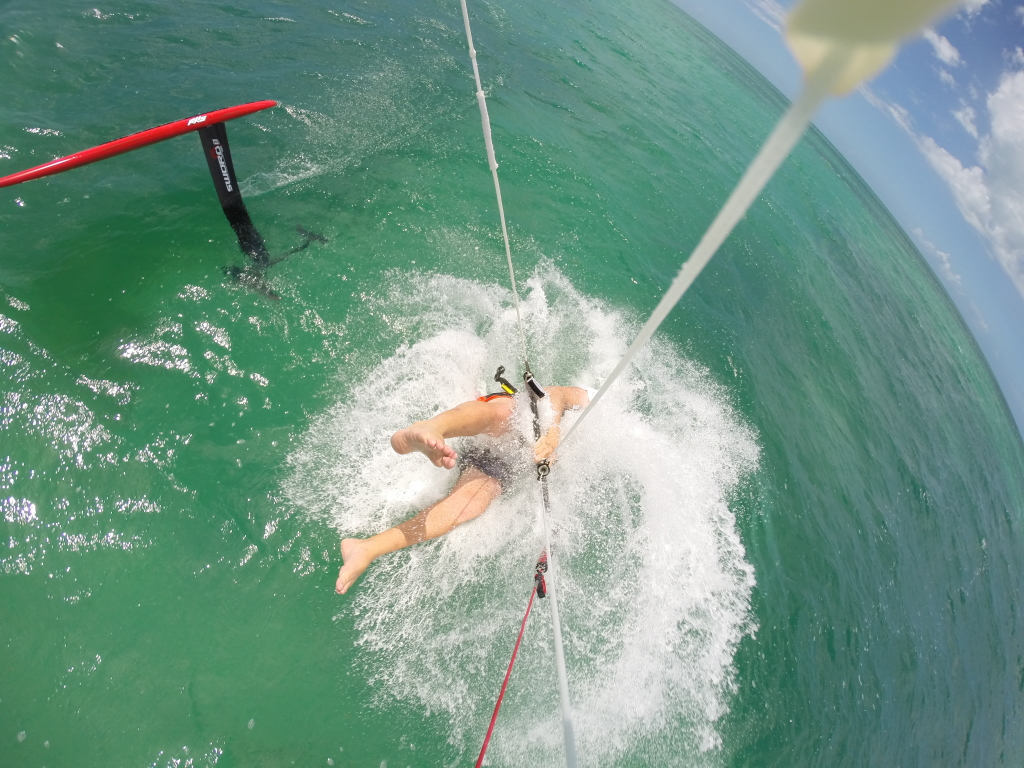
You will need to have good kite skills before attempting kite hydrofoil so that you can concentrate fully on the hydrofoil.
Directional board skills will be a big advantage when it comes to understanding the mechanics of Gybes and Tacks but are not a pre-requisite. Just jump off and turn the board around to ride back the other way to start with.
Equipment – What you’ll need.
You’re going to need the following to start foilboarding:
- Kite Hydrofoil – Nowadays there are many to choose from. I opted (against the advice of forums) for a full race hydrofoil and have had nothing but fun with it. Others advise to go for something more beginner friendly like the Moses- Silente, Sroka Foil or Liquid Force – Foil Fish but they accept that an upgrade may be needed after basics are mastered. I would like to ride more hydrofoils to enable me to give you a more objective opinion. Considerations other than cost that need to be considered are: portability, useability, build quality and attachment method.
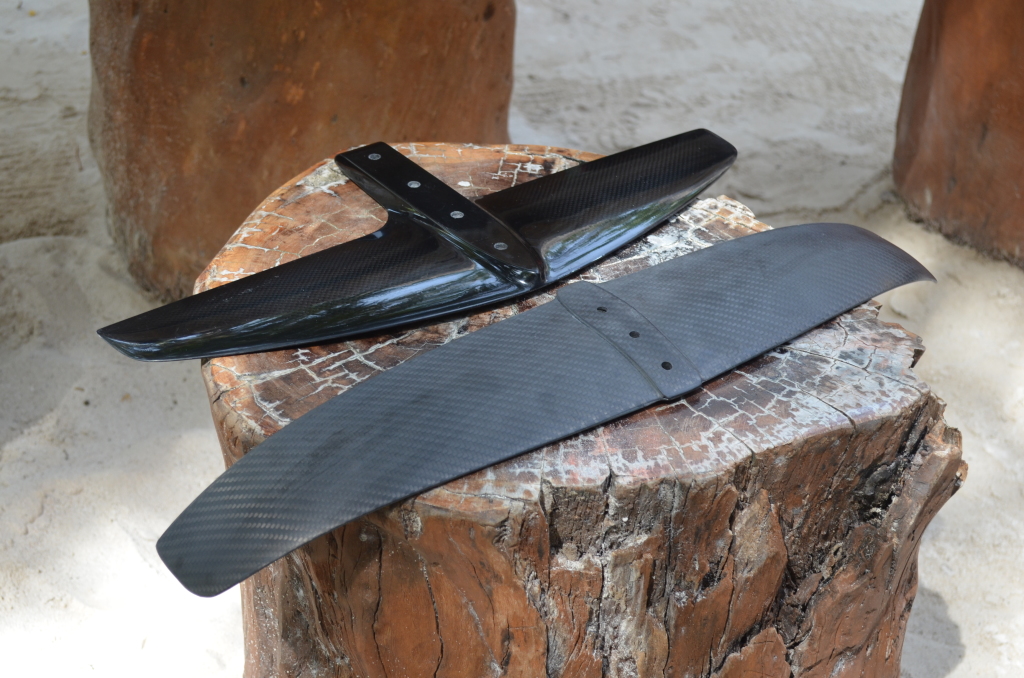
- Compatible Foil Board – Make sure that the board you choose will fit the hydrofoil you choose. My Axis Race foilboard has a tuttle box compatible with Taaroa Sword 2 and also Rails, compatible with any foil that uses a 90mm plate fitting. such as Magma, Taaroa Sword 1, Levitaz Hydrofoils, Liquid Force, MHL / Lift, Slingshot and Moses.
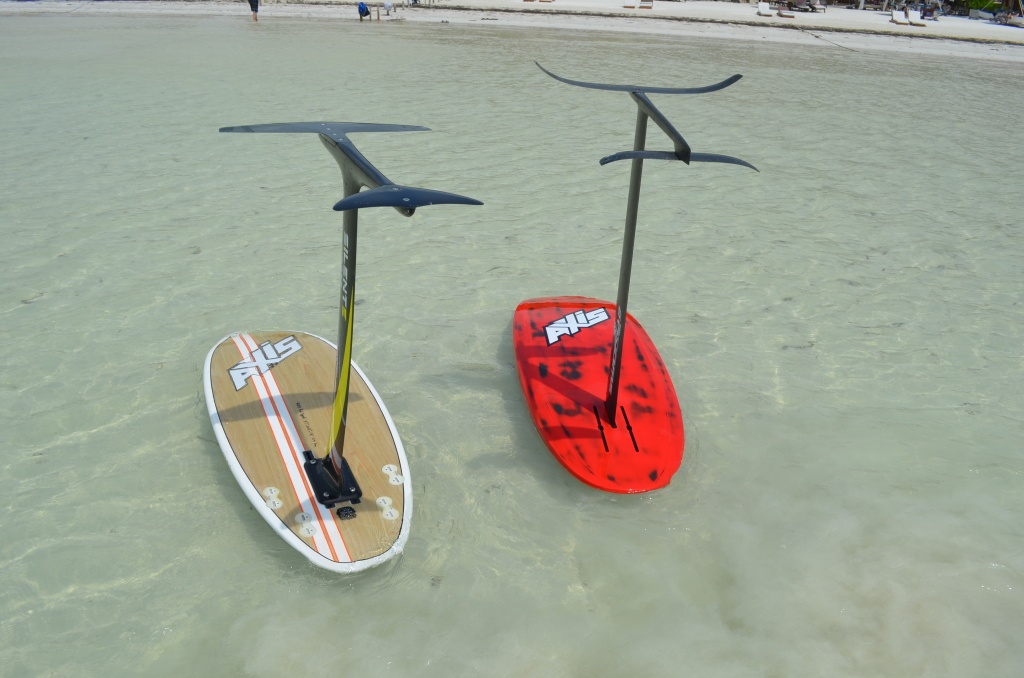
- The right foilboard – Do you want to use the board purely for foil or do you want a convertible board you can surf when the waves are rolling. Axis Kiteboarding make a really nice convertible foilboard that has four FCS finboxes along with the rail fitting for Magma, Taaroa Sword 1, Levitaz Hydrofoils, Liquid Force, MHL / Lift, Slingshot and Moses foils.
- Usual Kite Equipment – To start with your usual kite quiver shouldn’t need any changes but with time you may find need for large foil kites for high performance low wind blasting or tiny kites for higher winds.
- Helmet – Don’t forget this. Those foilboards like to chase you down when you fall off. Remember you are a beginner again and get used to remembering helmet and vest. The first couple of sessions I forgot one or the other and needed to make it part of my routine.
- Impact vest- Falls can be quite hard, fast and to start with unpredictable. Your ribs will thank you.
Don’t feel ready for a hydrofoil but still want to blitz it in those light summer breezes – Don’t overlook free race boards.
